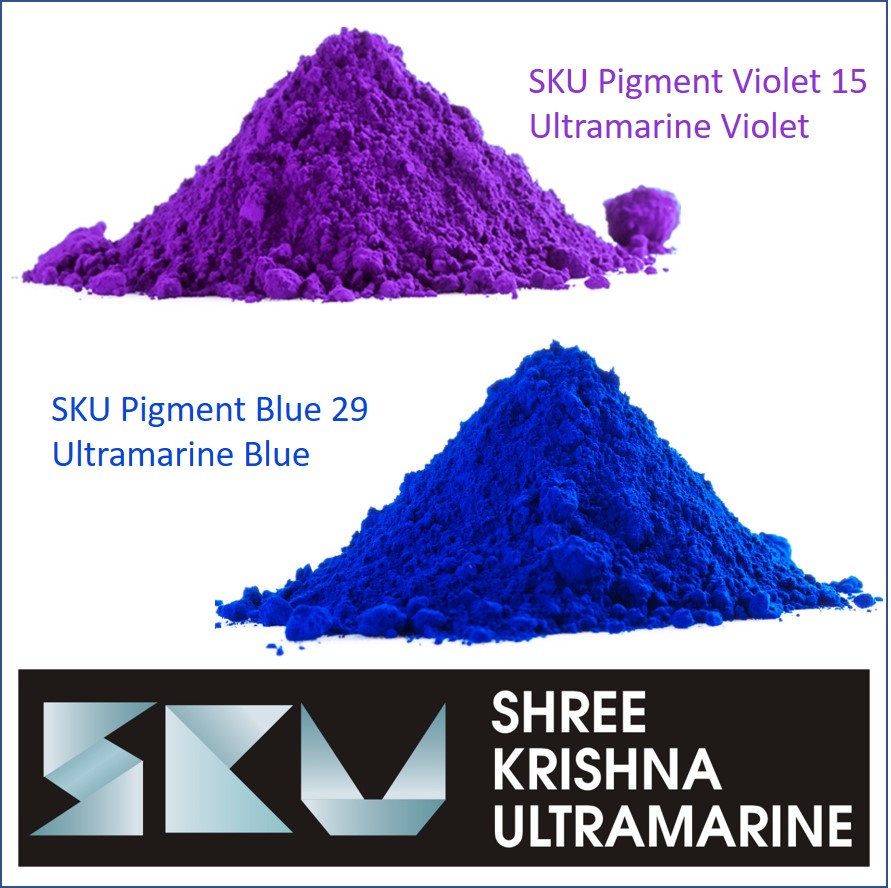A Trending Info on Social Media For Pigment Blue
Why Ultramarine Pigments Remain the World’s Most Trusted Blue

For centuries, color has influenced art, design, and industry. Among the most significant hues, Ultramarine is revered for its vivid tones. Today, companies like SKU Pigments specialize in manufacturing high-quality Ultramarine pigments, including Ultramarine Blue, Ultramarine Violet, Pigment Blue 29, and Pigment Violet. From construction and cosmetics, Ultramarine has become the standard of modern blue pigments.
Tracing Ultramarine from Lapis Lazuli to Industry
The name Ultramarine comes from the Latin “ultra mare,” meaning “beyond the sea,” a reference to lapis lazuli originally imported from Afghanistan. For centuries, it was the most expensive pigment, used by Renaissance masters to illuminate manuscripts. It symbolized wealth and divinity.
Modern chemistry made it possible to produce artificially Ultramarine pigments, bringing the once-exclusive shade into mass production. This breakthrough turned a precious rarity into a accessible solution for countless sectors.
The Versatility of Pigment Blue 29
Ultramarine Blue pigments—the synthetic form of Pigment Blue 29—are industry favorites. Known for their clarity, they are safe, eco-friendly, and non-toxic. They are used in:
• Paints and coatings for long-lasting shades.
• Plastics and rubber, thanks to chemical safety.
• Fine printing, where clarity is vital.
• Beauty products, given their skin-safe quality.
This balance of economy and brilliance keeps Ultramarine Blue among the top pigments.
The Elegant Appeal of Violet Shades
Ultramarine Violet offers softer tones that appeal in specialty coatings. Pigment Violet derived from Ultramarine is stable, making it ideal for sensitive products.
Its gentle color enhances interior design, while ensuring durability without chemical breakdown.
Industrial Uses of Ultramarine Blue
Pigment Blue—particularly Ultramarine Blue pigments—remains a market leader. It offers tinting strength for:
• Car finishes with resistance to fading.
• Packaging, ensuring consistent identity.
• Tiles, flooring, cement, adding functionality and design.
This wide applicability ensures Pigment Blue’s staying power.
The Benefits of Blue and Violet Pigments
• Pigment Blue 29 Non-Toxic & Safe: Ideal for cosmetics and toys.
• Heat & Light Resistant: Colors don’t fade under UV.
• Eco-Friendly: Green production methods.
• Cost-Effective: Budget-friendly industrial choice.
• Versatile: Applicable everywhere color matters.
Ultramarine in Modern Industries
1. Paints & Coatings: Durable architectural shades.
2. Plastics & Rubber: Safe for packaging.
3. Cosmetics: Skincare-safe pigments.
4. Construction: Flooring products.
5. Printing & Inks: Precision printing.
SKU Pigments: Global Ultramarine Experts
SKU Pigments leads the market, offering innovation in Ultramarine pigments. Their product portfolio includes:
• Pigment Blue 29 for industrial-scale use.
• Ultramarine Violet and Pigment Violet for luxury tones.
• Custom shades for specialized markets.
Their reputation is built on consistent quality and eco-friendly production.
Conclusion
From lapis lazuli origins to the backbone of blue pigments, Ultramarine has evolved with industries. Whether it’s the classic brilliance of Ultramarine Blue, the subtle elegance of Ultramarine Violet, or the dependability of Pigment Blue 29, Ultramarine pigments remain indispensable.
With SKU Pigments as a global supplier, industries secure reliable pigment supply. As demand for eco-friendly pigments rises, Ultramarine will stay ahead in global markets.
Frequently Asked Questions
1. What is Ultramarine?
A blue/violet pigment with historic roots and modern industrial use.
2. What is Pigment Blue 29?
A widely used industrial pigment.
3. Where is Ultramarine Violet used?
In cosmetics and decorative paints.
4. Are Ultramarine pigments safe?
Trusted globally for safety.
5. Why choose SKU Pigments?
Trusted supplier worldwide.